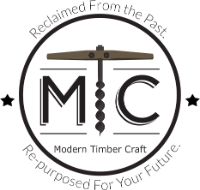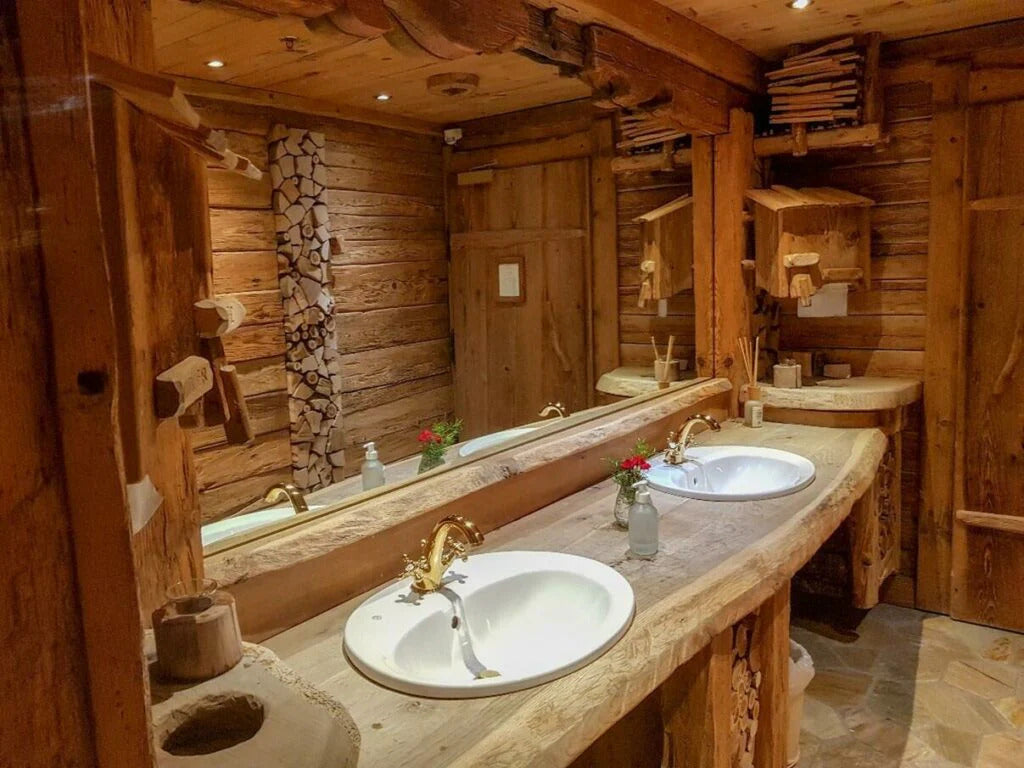When you are building or remodeling a bathroom, natural wood can be a great choice. Beautiful aesthetics, variety, and pricing give natural wood a strong advantage over engineered materials. Let's discuss the most important aspects of using natural wood in your bathroom.
Why use natural wood in your bathroom?
First off, natural wood has many benefits, including appearance and sustainability. Organic features found in natural wood are often difficult to mimic in engineered materials. And its grainy look and softer feel make it a strong choice compared to stone or laminate products.
Original wood is also organically renewable, so it makes a great choice for environmental enthusiasts. Stone or engineered materials are not renewable and must therefore be created from assembled or irreplaceable resources.

2" thick by 6" deep reclaimed wood floating shelves in an oil finish
Which wood species are suitable for a bathroom?
Choosing the right species is vital in bathrooms. High condensation periods and frequent contact with water, rot- and mildew-resistant natural wood limits the number of suitable wood species. Some of the most popular choices include:
- Teak. Teak is a premium hardwood. It has natural water-resistant oils that make it extremely resistant to rot and water damage. This natural resistance requires minimal finishing or maintenance. NOTE: Teak can be difficult to source in some areas.
- Birch. Birch is a beautiful light-colored wood option. With a uniform closed grain, it looks great and has a strong waterproof composition. Birch is also widely available.
- Maple. Maple has a closed grain similar to birch wood that provides a waterproof nature. It has a rich color (easily enhanced with the right finish) and it’s often widely available. However, maple can shrink from constant moisture exposure if not properly finished.
- Oak. Oak has a tight grain, which gives it strong resistance to water. This species accepts finishes easily and can be painted as well.
- Douglas Fir. Douglas fir is a strong choice for bathroom spaces. It has a light color with a surface that is easy to finish. Douglas fir wood can be naturally resistant to water, but will need a proper finish when used in high moisture spaces.
- Cedar. Cedar has a distinct reddish color that can be deepened with the right finish. And it has a natural resistance to rot and moisture damage, making it ideal for use in bathroom spaces.
How should you preserve and maintain natural wood in the bathroom?
Once you’ve chosen the right species for your bathroom, your next step is to select the proper finish. Finishes such as oils, lacquers, shellacs, and varnishes are all widely used on natural wood – each with its own benefits and effects on final appearance.

2" thick contemporary wall shelf with a lacquer finish
Shellacs should be avoided as a natural wood finish in bathrooms due to their low moisture resistance, which can quickly discolor the shellac and the color of your natural wood. Varnishes and acrylic lacquers are the most water-resistant finishes available, making them a strong choice for longevity.
With all finishes, proper application is key to maintaining the natural beauty of your wood. It’s best to take the time to practice applying your chosen finish on scrap pieces of the wood you’re using for your project. Testing your finish allows you to not only practice your application skills, but also reveals how your finish will affect the aesthetics of your wood.
Premium wood options, such as teak, typically require minimal maintenance, though all wood options will require periodic touch-ups to preserve the look.
What do natural wood options cost?
Choosing your natural wood will depend on your budget. Premium species like teak can run between $25 and $30 per board foot, making it the most expensive option available. More common species such as oak, cedar, maple, and birch range from $5 to $9 per board foot. The relatively low cost of these widely available species make adding protection worth the cost.
(Keep in mind that lumber prices fluctuate, so the prices given above may be different when you read this post.)
Good luck with your bathroom project - and check out our natural wood options here!

Written by Jake Park
Jake is the founder of Modern Timber Craft and is a seasoned reclaimed woodworking enthusiast with over 20 years experience.


